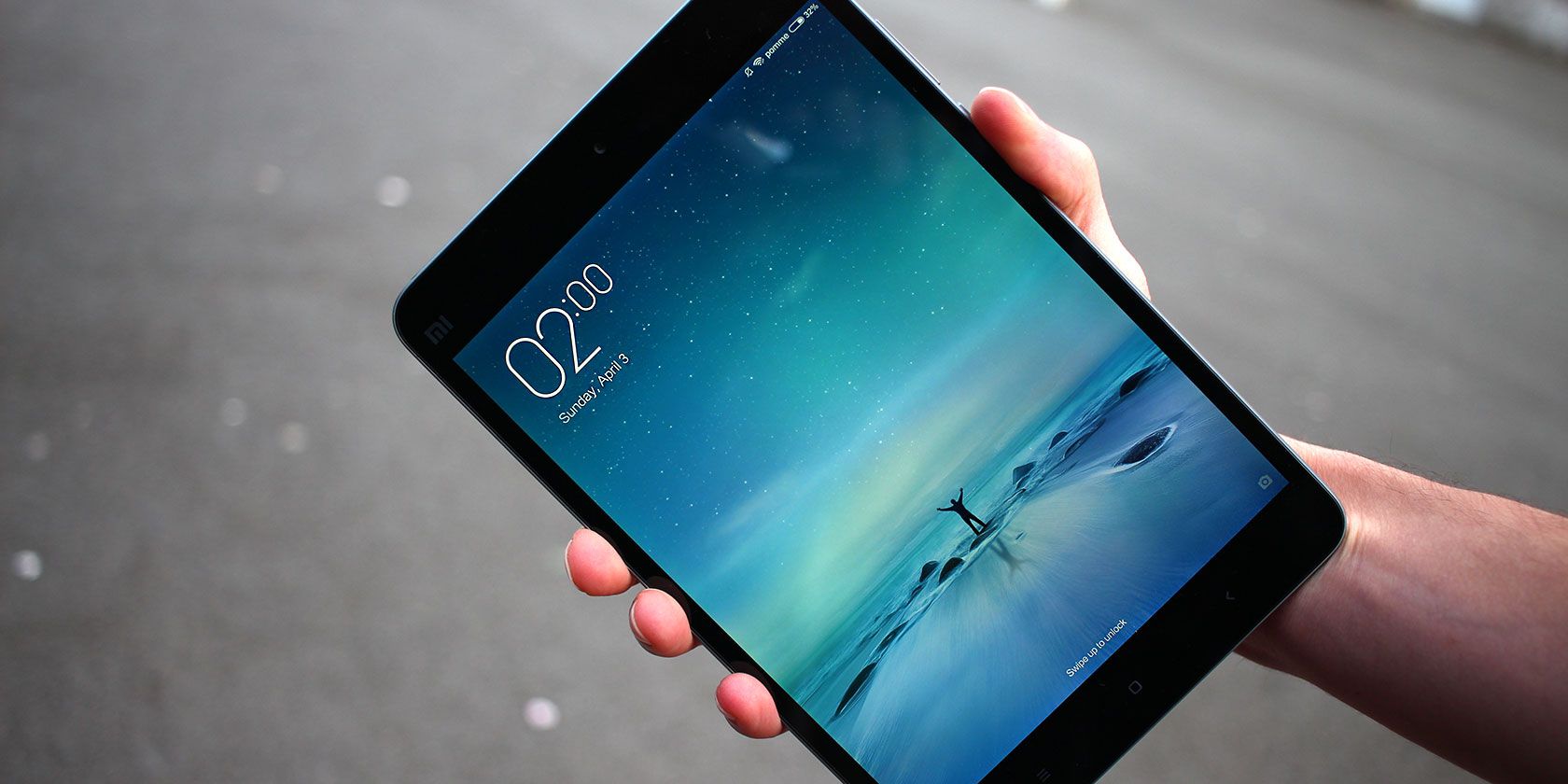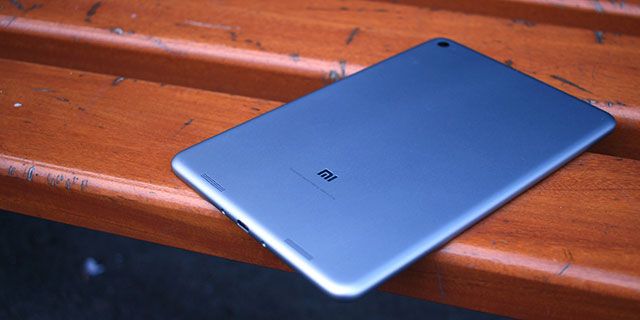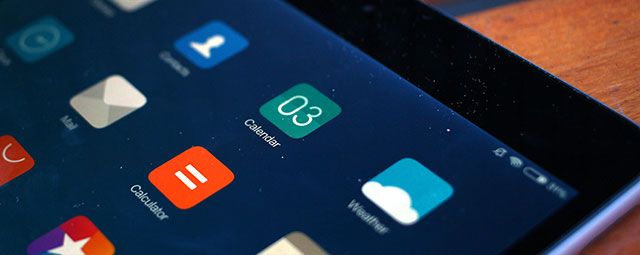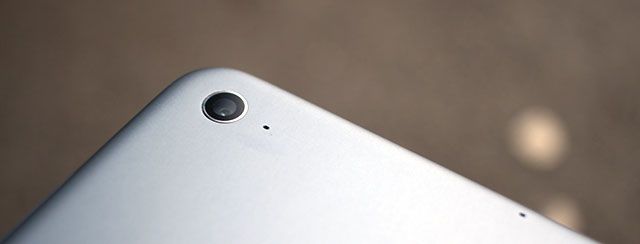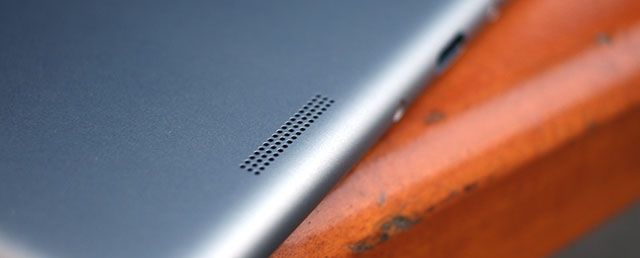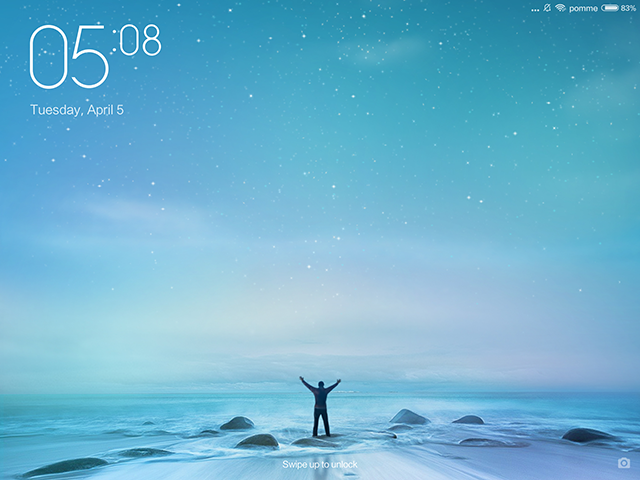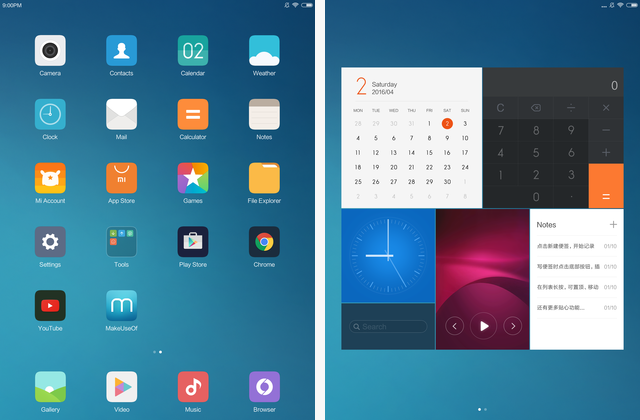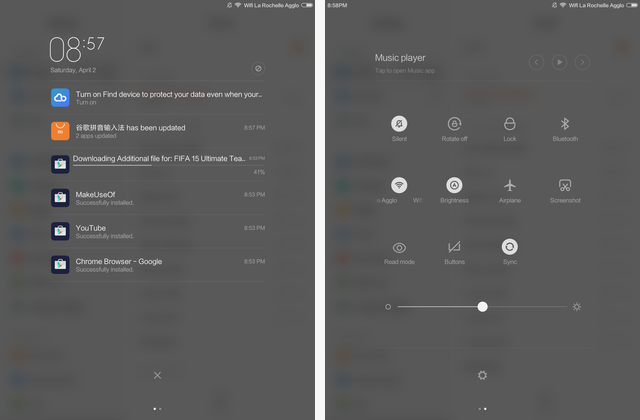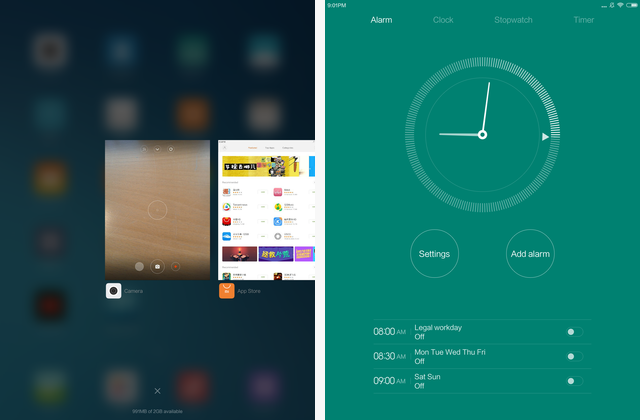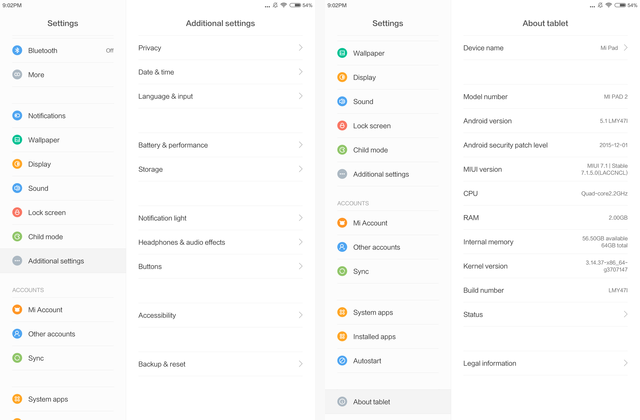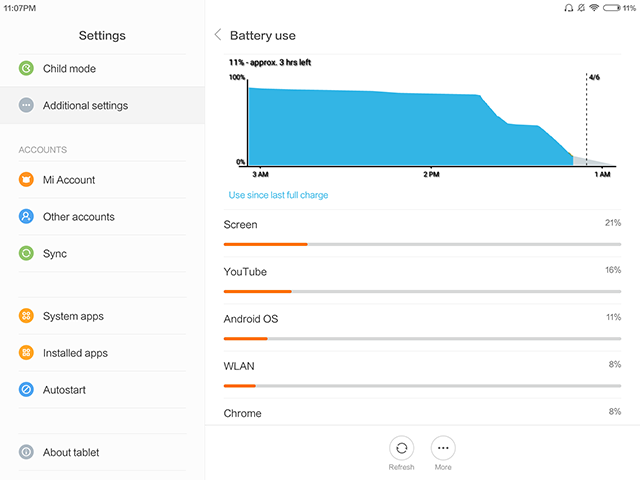Xiaomi Mi Pad 2
Do you want an iPad Mini without the iPad Mini price? Then Xiaomi thinks they can win you over with the Xiaomi Mi Pad 2.
This little 8-inch, $280 tablet is essentially an iPad Mini clone. On the outside, the two are nearly indistinguishable, and on the inside, Xiaomi has tweaked Android so much that it basically looks like iOS.
Chinese knock-offs don't have the best reputation, but can Xiaomi buck that trend? Let's take a closer look.
Specifications
- Price: $280 from Xiaomi Device ($200 for the 16GB model)
- Dimensions: 200mm x 133mm x 7mm (7.87in x 5.24 x 0.28 in)
- Weight: 322g (0.71lb)
- Screen: 7.9" IPS (2048px x 1536px) LCD display
- Processor: 64-bit Quad-core 2.2Ghz Intel Atom x5-Z8500
- RAM: 2GB
- Storage: 64GB
- Battery: 6,190mAh
- Camera: 8MP rear-facing, 5MP front-facing
- Operating System: Android 5.1 Lollipop with MIUI 7 overlay (Alternate version ships with Windows 10 instead)
- Extras: USB Type-C and fast-charging
Hardware
The Mi Pad 2 really looks and feels every bit like an iPad Mini -- and that includes the premium aspect. It's made from aluminum and is nice and light. Physically, it feels like a lot more high-end than it's price would lead you to believe.
The power button and volume rocker are located along the upper right side, while you'll find the headphone jack to the left side of the top. The left side is then completely bare, with the USB-Type C port occupying the bottom side of the device.
Three capacitive keys take up the lower bezel -- Recents, Home, and Back -- and the bezels along the side are quite thin, which, while visually appealing, does make the tablet a little difficult to hold with one hand.
Up top there's a Mi logo above the screen to the left, the 5MP front-facing camera in the center, and an LED notification light to the right.
The back side just has a little Mi logo in the lower center, the 8MP rear-facing camera in the upper left, and two speakers along the very bottom.
Screen
Don't worry about seeing pixels here. The better-than-HD resolution (2048px by 1536px) looks great on the 7.9" display, and the IPS means that you get solid viewing angles. Brightness is pretty good, but by no means extraordinary. I'm impressed by the clarity given how cheap of a device this is.
Camera
Xiaomi managed to pack an 8MP camera onto the back of this tablet with a relatively low f/2.0 aperture, which makes for decent low-light shooting. The camera certainly won't be winning any awards, but it's average for a tablet -- though there is no flash.
The front has a 5MP camera that can lead to some solid video calling and decent selfies. The camera's interface is generally is pretty tweaked from stock Android but it has a very nice, clean look to it.
Speakers
Two tiny speakers flank the lower back of the Mi Pad 2, but they are shockingly loud. I was impressed by the sheer volume and the quality that it retained at full-blast. Obviously, audiophiles might be a bit disappointed, but for the average person, these speakers will deliver a great experience.
Software
This is Android, but... barely. Think Android modified as much as possible to resemble iOS, and then you'll get a feel for what MIUI 7 is. Whether that's a positive or a negative thing is up to you.
All your apps are right out and in the open -- no app drawer in sight (though you could always download an alternative launcher). Swiping all the way to the left gives you a panel to keep widgets, if that's your thing.
Unlike some other Chinese-made tablets, Xiaomi's Mi Pad 2 doesn't seem to have any built-in Chinese apps that you'll need to hide away if you don't speak Chinese. With the tablet set to English, you really only encounter English.
Plus, the Play Store is here! This means you have access to all the awesome apps you would on any other Android device.
Pulling down the notification panel will blur out your screen a bit and present you with your list of notifications. One major difference is that your notifications won't all appear on your lockscreen as they do in either Android or iOS. Swiping to the side reveals the Quick Settings panel (Xiaomi seems to have avoided doing anything Notification Center-like).
These buttons aren't customizable but there is a music player widget, a brightness slider, a button to jump into the Settings app, and several tools like screenshot, WiFi, Bluetooth, rotation, etc. Two notable ones are the Read mode, which seems to turn the screen more red, and Buttons, which disables the capacitive keys so you can hold the tablet there (most likely for playing games).
Multitasking, which is done by tapping the Recents button to the left of the Home button, has also been redesigned to look more like it would on an iPad. Swipe horizontally through apps to switch between them, swipe up to clear them from memory, and swipe down to lock them into memory.
Even basic apps like the Clock have been completely redone, but they actually do like quite gorgeous. Some might even prefer this to the stock Android clock app or other alternatives.
Diving into the settings app, you can see that Xiaomi has opted for a two-panel approach, that works well on the 8" screen. There's not a whole lot of customization to be done here, but you can change the long-press actions for the capacitive keys, toggle the notification LED, access Child mode, control what apps start on bootup, activate double-tap to wake, and more.
One software feature that is noticeably missing, however, is device encryption. Google started automatically encrypting devices when they released 5.0 Lollipop, and on most devices it's at least an option given that it's a major privacy concern -- but unfortunately, MIUI 7 just has no form of device encryption.
Basically, you're getting the aesthetic of iOS with the functionality of Android, which honestly isn't too bad of a deal.
Performance
Having been disappointed by cheap tablets like this in the past, I didn't have high hopes for the Mi Pad 2, but I was pleasantly surprised. Animations were quick, touches were responsive, and multitasking was a breeze. In fact, if someone had handed me this tablet without a price tag, I never would've guess from the performance that it was a budget device.
That being said, it is hindered by some incompatibilities with apps. Major apps like Facebook, Twitter, and Snapchat all worked fine, but certain games couldn't even be downloaded -- I would just be met with the dreaded "This app is not compatible with your device" message.
I really can't recommend this as a gaming tablet. Basic games like Stack played well, but even the higher performance games that I could download (like Asphalt 8) lagged consistently. Performance within the interface was solid, but within games was very weak.
Battery Life
The Mi Pad 2 is not battery life champion, but it's not terrible. With the screen off, it consumes an extremely tiny amount of battery, which is useful for a tablet you leave around for extended periods of time. But when using it heavily, I got only 4 hours of screen time.
Your mileage may vary of course, but I found that using it moderately for messaging, watching YouTube, and browsing the web allowed me to get through the day just fine -- but certainly no more than a day.
One upside is that the Mi Pad 2 supports the new USB Type-C, which is reversible and supports fast charging (which did in fact charge the device in well under 2 hours). Sure, it won't work with your old micro-USB plugs, but it is future proof.
Should You Buy It?
The Xiaomi Mi Pad 2 does a lot right for its price. The $280 version that we reviewed offers solid performance, a good screen, great speakers, and a whopping 64GB of storage. On the other hand, Apple's 64GB iPad mini goes for about $500.
You're obviously making some concessions here. You won't be able to use iMessage or unlock the device with your fingerprint -- and gaming performance is a lot more limited -- but if you can get by without those things, you could save a good chunk of change by going with the Mi Pad 2.
[recommend] If you just want a nice, small tablet for browsing the web, watching videos, and using social apps -- and you're okay with an Apple-inspired design, go for it. However, if you're looking for a gaming tablet or something with that more resembles an actual Android experience, look elsewhere. [/recommend]

